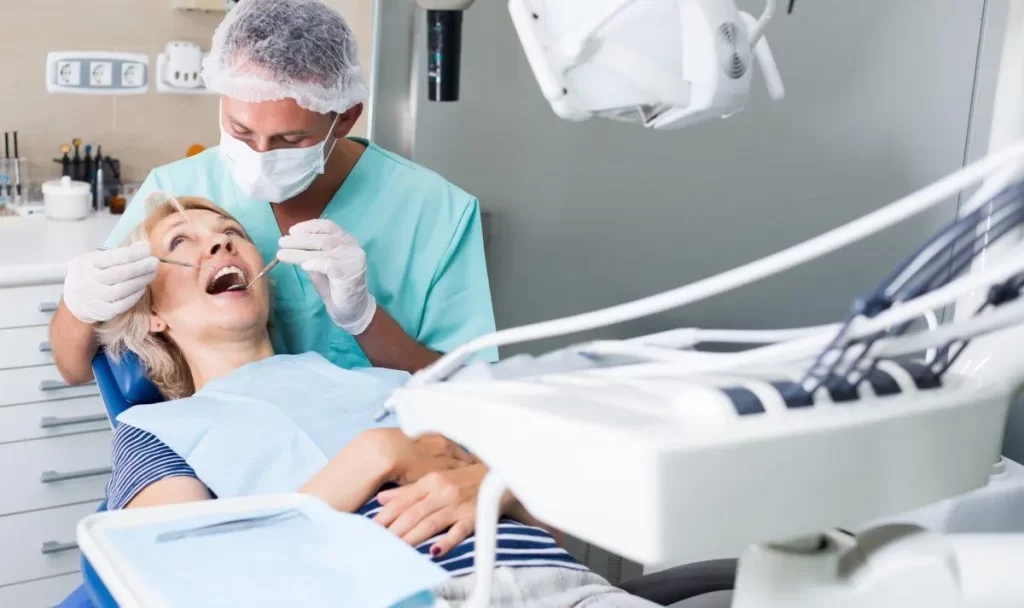Exploring the Latest Innovations in Dental Care Technology

Digital imaging and 3D scanning can provide patients with more precise and efficient care, as well as the use of tele-dentistry as an emerging technology in the field of dentistry.
Other innovations are designed to decrease pain and invasiveness; lasers are now used to remove teeth – and gum tissue – with nocutaneously anaesthetized patients and no need for scalpels.
Artificial Intelligence
If utilised correctly, AI might just be a game-changer for dental care technology as it will automate the diagnostic procedures, provide superior workflow design and eventually reduce the operational and administrative costs. But… by all means, let’s not replace humans with machines!
Similarly important is the need for AI developers and clinicians to be open regarding how patient data will be used in AI-aided decision-making, so that patients can properly consent and meet the requirements of law and ethics. Any potential bias brought into these AI-aided decisions from using non-diverse training data sets will also require fairness-aware algorithms.
In addition to decreasing costs to patients and practitioners to foster optimal oral health outcomes for both – which means higher patient satisfaction and a better service for all – such approaches also promote a more interesting work environment for all dentists and their staff, and lead to greater returns on investment.
Digital Impressions
These digital impressions aren’t some sort of distant, futuristic technology – they’re a keystone for both patients and dentists. Digital scanners that make digital replicas means patients can literally sit back and relax during the impression process, taking the angst or discomfort out of the use of modest impression moulds (let’s face it – if you have a sensitive gag reflex or have dental anxiety, or both, then you might want to avoid a horrible experience). Quick image scans are also more comfortable than the molding process for patients.
After a sufficient impression is made, electronic files of the digital impression can be sent directly to the laboratory and there is no cost involved in transportation or the time it takes for physical models to travel between offices. Digital technology is allowing us to provide our lab technicians with more precise measurements, which can be used to fabricate restorations with improved fit with less remakes/returns, which translates to saved time and money for both the dentist and patient.
Teledentistry
Teledentistry is becoming a fast-growing technology that is transforming dentistry, a field that combines technological advancements with oral health benefits to both patients and clinicians.
If they want to base their ideas on supporting evidence, here’s some food for thought. Dentists offering online dentistry let the patient ‘see’ an actual oral cavity that they share in real time and not just a 2D image on the screen With online dentistry, it opens up access to practitioners who may not exist in their community, and it cuts down on overhead costs for the dentist.
Teledentistry is a subset of telehealth – a broad term used to describe remote and virtual health services. These services connect consumers and providers through the use of videoconferencing, live streaming and electronic records transfers. Teledentistry harnesses these technologies with the same precision and confidentiality used to communicate with patients over the phone or via email, as long as the exchange of information is done over a secure network. And many times, this form of telehealth treatment is covered by dental insurance as a valid form of dental treatment.
Lasers
Laser dentistry has many hard and soft tissue procedures with maximum output in comfort, efficiency, precision, optimum clinical results, and safety benefits to patients and practitioners when used as the procedure of choice.
Unlike conventional drilling, laser energy closes off blood vessels and nerve endings during treatment to minimise pain during the procedure and post-treatment discomfort, while simultaneously sterilising the treatment field to destroy bacteria in the mouth and lower the risk of infection.
Its multifunctional nature permits laser use for the removal of tooth decay, as well as treatment for gum disease and crown placement. The technology’s visual presentation feature allows patients to better view their procedure as they watch it from their dentist’s chair and it gives them the added feeling of participating in their own dental work. Laser dentistry might become the wave of the future.
Nanotechnology
At the nanometre scale, material takes up different physical, chemical and biological properties compared with the same material at a larger scale. Nanotechnology may well lead to less invasive dental treatments as well as novel techniques for drug delivery.
Nanoparticle-based contrast agents for MRI scanners can enhance the visibility of soft and bone tissues in a patient while lowering radiation exposure, and nanoparticle-based dental varnises help tooth enamel remineralise to defend against caries while acting as sensors for real-time oral health monitoring. This integrated approach can potentially reduce patients’ anxiety and stress while increasing patient satisfaction, while reducing the time and work needed for diagnostic tests. It could in turn help to promote the growth of teledentistry to enhance the accessibility of dental services.

